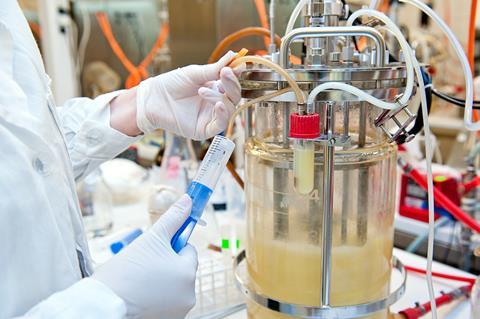Why chemists need to embrace this rapidly developing field
What has biology got to do with chemistry?
Biology is chemistry! Biological systems are often turned to for inspiration in the search for new reactions and catalysts. Just think about the cell of a microorganism. Inside, staggeringly efficient metabolic enzymes are used to transform simple abundant starting materials into beautifully complex natural products. Chemists simply can’t compete with nature in this regard.

What is synthetic biology?
Synthetic biology is about building artificial systems that can then do something useful. For example, we can use our knowledge of enzymatic chemistry to genetically encode a synthetic pathway within a sequence of DNA. Once inside a microbe, this DNA will then coerce the cell to produce whatever molecule we desire. To draw an analogy, this is the equivalent of a reaction flask that produces all the catalysts and reagents for a desired total synthesis at the exact point in the synthetic route that they are required, performed in water using renewable materials and completed in less than a day. If we could do this in a lab or on an industrial scale, it would make any chemical process incredibly efficient.

What are the advantages of synthetic biology?
There are plenty. For starters, the products we want can be derived directly from starting materials such as glucose, CO2 or methane. Once the best enzymes have been identified, they can be moved between different species; we can even connect whole pathways together using genome engineering. Reactive and toxic intermediates can be contained within sub-cellular compartments, reducing hazardous waste. And the end product can be exported from the cell using natural secretion pathways – which means we don’t have to perform difficult purifications.
Why isn’t synthetic biology used more widely?
We don’t have enzymes that can match every known reaction in organic chemistry, so synthetic biology cannot begin to rival the diversity of compounds that are accessible via traditional methods. Moreover, many commercially important molecules contain structural motifs that can’t be made using known enzymatic chemistry. For this reason, many current bioprocesses produce synthetic intermediates, which are then extracted and then further developed in a synthetic chemistry lab to get the finished product.

Can we develop the enzymes we need?
We hope so. Modern biology is currently looking to address this gap in reactivity by using the very tool that empowered it in the first place – evolution.
Directed evolution is a method that tries to mimic natural selection to get the genes/functions we want. Researchers can identify similarities between enzymatic reactions and chemical reactions in the lab and then repeatedly try to select for genes that show this function. This results in huge libraries of mutated genes, from which highly active variants can be identified.
Enzymes now exist that can perform functions not seen in nature but that are very useful to chemists. It is only a matter of time before these new families of designer enzymes are integrated within engineered metabolic pathways.

Does this mean that chemists won’t be needed?
Not at all – in fact, it means the opposite. Chemists offer a unique molecular understanding of biology. They are indispensable to synthetic biology, and the best approach to creating the molecules we need will probably involve the use of tools from both fields. There is a lot of work chemists can do, such as utilising sustainable carbon sources into existing processes; developing biocompatible catalysts or designing new catalytic cofactors for use in artificial metalloenzymes. These are all exciting developments for synthetic biologists – and means the future of the two sciences are likely to be even more entwined.












No comments yet